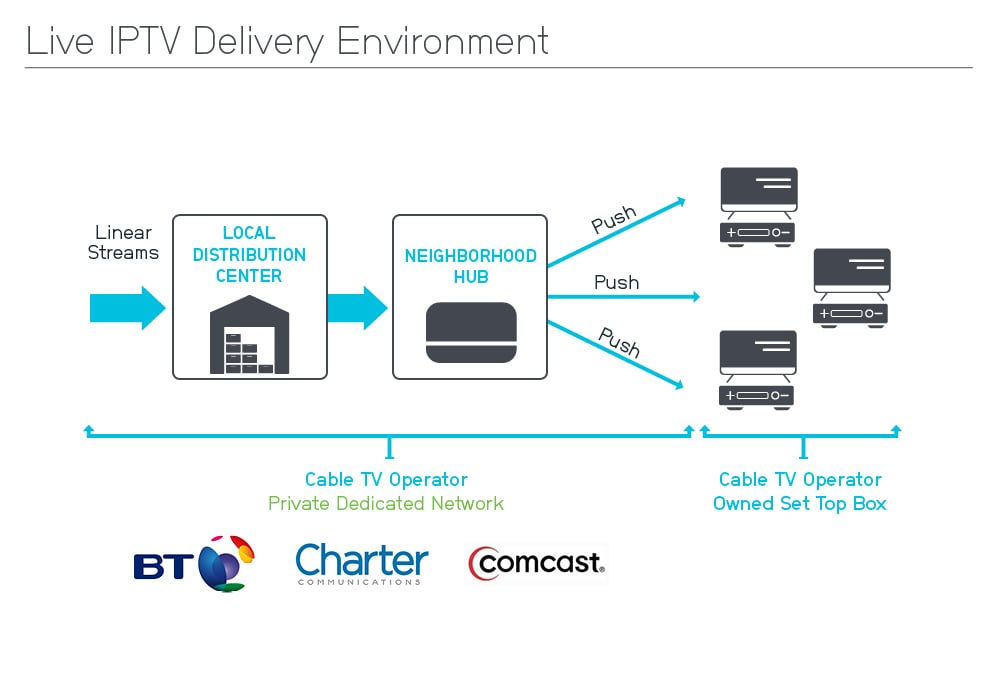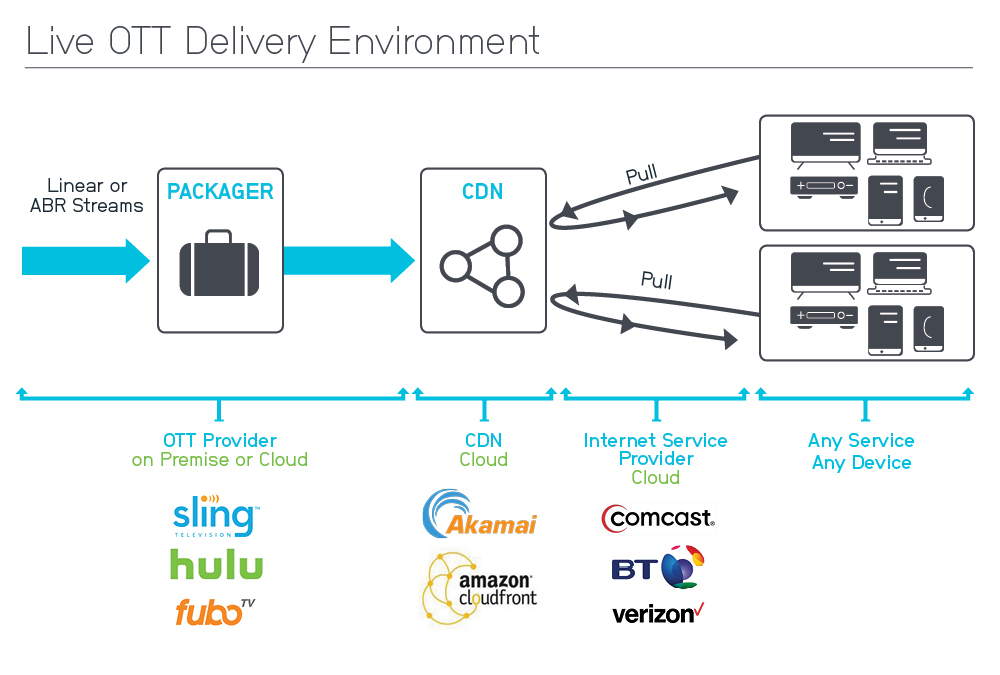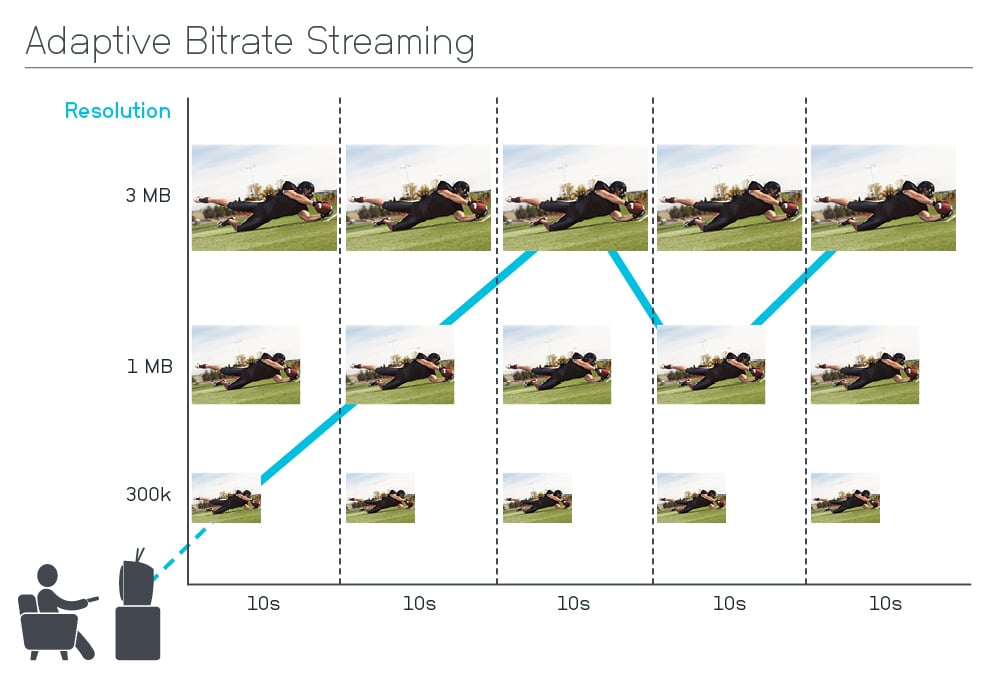What Does OTT Really Mean?
OTT (over-the-top) is a means of providing television and film content over the internet at the request and to suit the requirements of the individual consumer. The term itself stands for “over-the-top”, which implies that a content provider is going over the top of existing internet services.
The Shift from IPTV to OTT
Let’s start with how we got here. Since the mid-1990’s, digital television content delivery via Internet Protocol (IPTV) has been the common way for TV service providers to distribute content to customers. Reception typically requires a TV subscription, a contract, a set-top box, and a technician to connect the array of hardware to high-speed internet services in each customer’s home or office. Thus, content is distributed through private “multicast” mpeg transport stream networks (meaning multiple streams are pushed to multiple consumer locations, like digital cable and satellite TV). This locks consumers to one service provider (restricted to whichever is available in your area) and the content offered is limited to channels available in their particular area and region.


The OTT Advantage
With OTT video delivery technology, people now have a multitude of options at their fingertips. They have the ability to view content on a variety of platforms such as: Smart TVs, Roku, computers, tablets, mobile phones, or gaming consoles. They also have the option to access multiple distributors for specialized programs and view channels by “app switching”, giving them more control over the content they choose to purchase and watch.
In fact, while they both use IP technology, IPTV is delivered over private cable network compared to OTT delivered over internet services. OTT systems overcome the limitations of the single operator set top box (STB) technology required by IPTV. With OTT, content is only delivered upon request. Each connected device has a unique connection to the source of the content via the internet, making it “unicast”- delivering one stream to one device.
The Technology Behind Over-the-Top Content Delivery
How does OTT Work
One of the inherent problems with serving TV content over the internet is being able to contend with the wide range of network performance. Performance depends on what speed the connection will support (e.g. Fiber, Wi-Fi, LTE, DSL), the display device (e.g. phone, streaming device like Roku, Apple TV, or Firestick, or laptop), and then how many network hops there are between the provider and the end user. At a high-level, OTT systems and technologies are designed to minimize the impact these parameters have, by providing a “best effort” approach to serving up the content. That is, OTT technology will adjust to the network performance of the entire chain in real-time so that the video and audio are delivered without pauses caused by buffering. These pauses are extremely frustrating for the viewer and may cause them to abandon the content.
For slower networks it will scale down to lower bit rates. For faster networks it will scale up to provide the best quality. Ideally, when on a very fast network, the player will buffer additional content to “get ahead” and smooth out periods of network slow-down. It does this with a technique called ABR which stands for Adaptive Bit Rate streaming.
Pro-Tip: Many people use the words ABR and streaming as synonyms

How Does OTT Affect My Workflow?
There are two kinds of content distributed within an OTT video delivery environment. The first is Video on Demand (VOD) - finished content such as a movie, ready for the consumer to view. The second is called LIVE - live streaming of content such as a sporting event, for the consumer to view in real time. The workflow for both types of content is similar, but different enough for each to deserve a walk through.
For VOD, content chunks are a bit longer which makes the process more efficient. While it is being viewed, players can cache larger chunks of content far enough ahead to possibly download the entire length of the movie.
For LIVE, content chunks are minimized to shorten the delay between the actual event and the remote viewing. The players cannot cache as far ahead, so they need to tune the bit rates in accordance with the actual current performance of the network. This makes the process of streaming LIVE content at high quality and low-latency, difficult to do as well as current cable or satellite TV providers which have perfected this over the years. During a LIVE event, the service provider will encode and package their feed into small ABR file chunks and push these out into a CDN (Content Delivery Network). The consumer’s device then pulls each of these file chunks from that CDN to produce continuous playback.
With all of this in mind, the differences between this process and typical IPTV operator become clear. Traditionally cable IPTV services is pushed over dedicated cable networks directly to the home. In the case of OTT, the consumer pulls content upon request.
Challenges & Points of Concern
- Visibility of distribution quality is challenging but can be addressed with premium OTT testing and monitoring solutions
- OTT services often involve multiple service providers, CDNs, and local Internet which complicates diagnostics
- Quality user experience will be a key differentiator for OTT providers
- LIVE OTT delivery is more complicated, must work across bursty non-guaranteed internet networks, and must deliver to an endless range of devices
- How do OTT operators guarantee quality delivery, operational intelligence, and diagnostics?
Are You Down with OTT?
The acronym OTT perhaps does not describe, nor do justice to, what is clearly one of the most fundamental advances to the distribution landscape. Decision making on what to watch, when to watch it and on what device to watch it, is now more firmly in the hands of the consumer. The measurement of the performance of the technology in guaranteeing a satisfying experience to the consumer, has never been of more importance.
Whether for VOD or a LIVE experience, OTT, and the freedom of choice it represents, is here to stay.